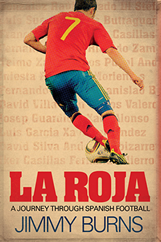Book review: From ‘little devil’ to rescuer of fallen women

This latecomer on the Pope Francis biography scene is fresh, vivid and beautifully crafted
Francis: Pope of Good Promise
by Jimmy Burns,
Constable, £25
With so much now on record about Pope Francis and at least three weighty biographies by well-known Catholic writers published during the past two years, the question has to be: what’s new here? Jimmy Burns runs the risk of being pipped at the post by Paul Vallely, Austen Ivereigh and Elisabetta Piqué with his own late entry.
A mark of this new biography is a fresh and vivid mosaic of interviews Burns has secured with people of all ranks who have known Jorge Mario Bergoglio/Francis in one capacity or another over the years. The result is no hagiography, but rather a well-researched, carefully crafted exploration of a complex, sometimes enigmatic, often surprising pope and his long apprenticeship for the role.
During his pilgrimage through Bergoglio’s faith journey, Burns travels widely, recording his own encounters with Francis’s old friends, fellow seminarians, priests, critics, and those lay people whose lives he has touched.
A recurring word Burns uses to describe Bergoglio is “discreet”, which variously points to his diplomacy, his pragmatism and his occasionally mystifying silence at significant moments. A leading member of the Argentine political establishment, for instance, sees him as “a reasonable if politically cautious individual with whom he could deal discreetly, unlike others who threatened to confront him publicly”. Bergoglio (and later Francis) turns out to be a spiritual leader prepared to implicate himself in the labyrinth of secular politics – but not at any price. This is a pope who wants to listen, but who is not for turning.
“He was a devil, a little devil, naughty and very easily distracted at times,” recalls a school friend. Other classmates remember his intense faith and intelligence, his ability to grasp new ideas, his popularity and his willingness to help others. He was also, they said, quite sociable, and not a bad tango dancer.
His grandmother encouraged his vocation, something he later described to colleagues in Buenos Aires as “a great gift that sneaked up on me unnoticed”. Politically, the prevailing Peronism struck a chord with the Bergoglios, as it did many other lower-middle-class immigrant Catholic families, based on the notion that social justice can be reached by balancing the interests of capital and labour.
Reminding us that Donald Trump, Hitchcock, Robespierre and Freddy Mercury were all educated by Jesuits, Burns goes on to examine in some detail Bergoglio’s own Jesuit roots and his increasing engagement with the disinherited in Argentina. After training in Córdoba, he spent a year with Jesuits in Santiago, Chile, in a community dedicated to the example of Alberto Hurtado, a priest who devoted his life to improving the conditions of the marginalised poor.
Some while later, Fr Guillermo Marco, his media-savvy spokesman in Buenos Aires, recalls: “After a short time as bishop, Bergoglio began to distinguish himself from the rest … he didn’t use a chauffeur-driven car, he walked, and travelled in public transport … we were all pretty amazed at the time … he would go and visit individual priests … develop a personal relationship … listen to their problems, something that other bishops didn’t do as they settled comfortably into their elevated roles.”
With a sureness of touch, Burns probes the implications of Bergoglio’s rise through Church ranks; his crisis of conscience during the “Dirty War” in Argentina when he was accused of neglecting persecuted priests and families of the “disappeared”; his navigation of a major financial scandal in Argentina; his delicate role as a political broker during and after the Falklands War; his support of the curas villeros (slum priests) in Buenos Aires’s shanty towns; the challenges of being “God’s banker” and the abuse scandal.
But it is in his relationships with women that Francis’s essential generosity of spirit emerges. We need to bear in mind, explains Burns, their prominence in his life, beginning with the ubiquitous Marian folk images that exist to this day in South America, on the one hand, and, on the other, the prostitutes “who would come and unburden their consciences while denouncing the exploitation and cruelty to which they were subjected … because they considered him non-judgmental”.
A young unemployed drug addict who survived being beaten up, gang-raped and thrown into a stinking canal met Bergoglio on one of his slum visits. “I saw a father, I saw a light,” she tells Burns. “He said he wanted to help me train as a therapist so I could help other addicts and he managed to get me a scholarship to do a university course.”
An American nun, the Iron Man contestant Sister Gertrude, says: “I feel I can relate to him as a human being … I am appalled that there are people who criticise him when all he is doing is preaching the Gospel, respecting each individual … I mean they criticise me when I run, and I run 10 kilometres a day. Why would I stop? It’s a gift I’ve been given.”
This article first appeared in the Catholic Herald magazine (9/10/15)

